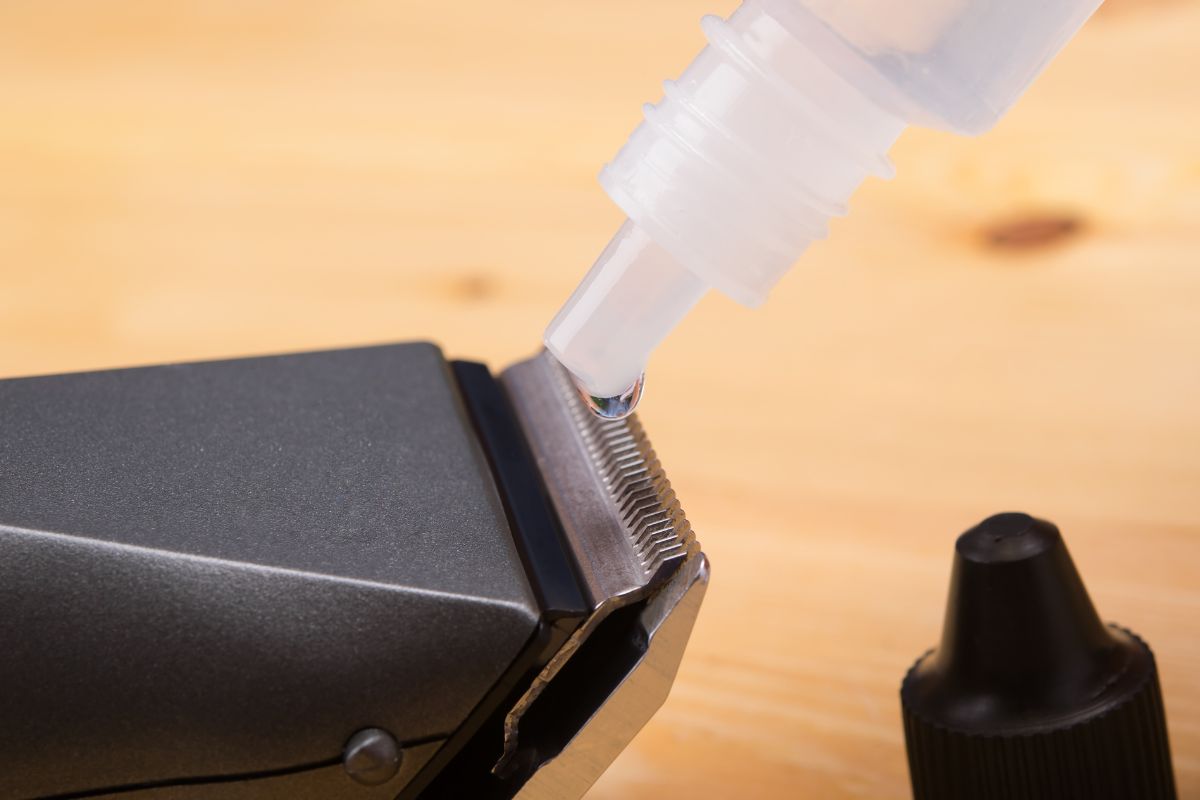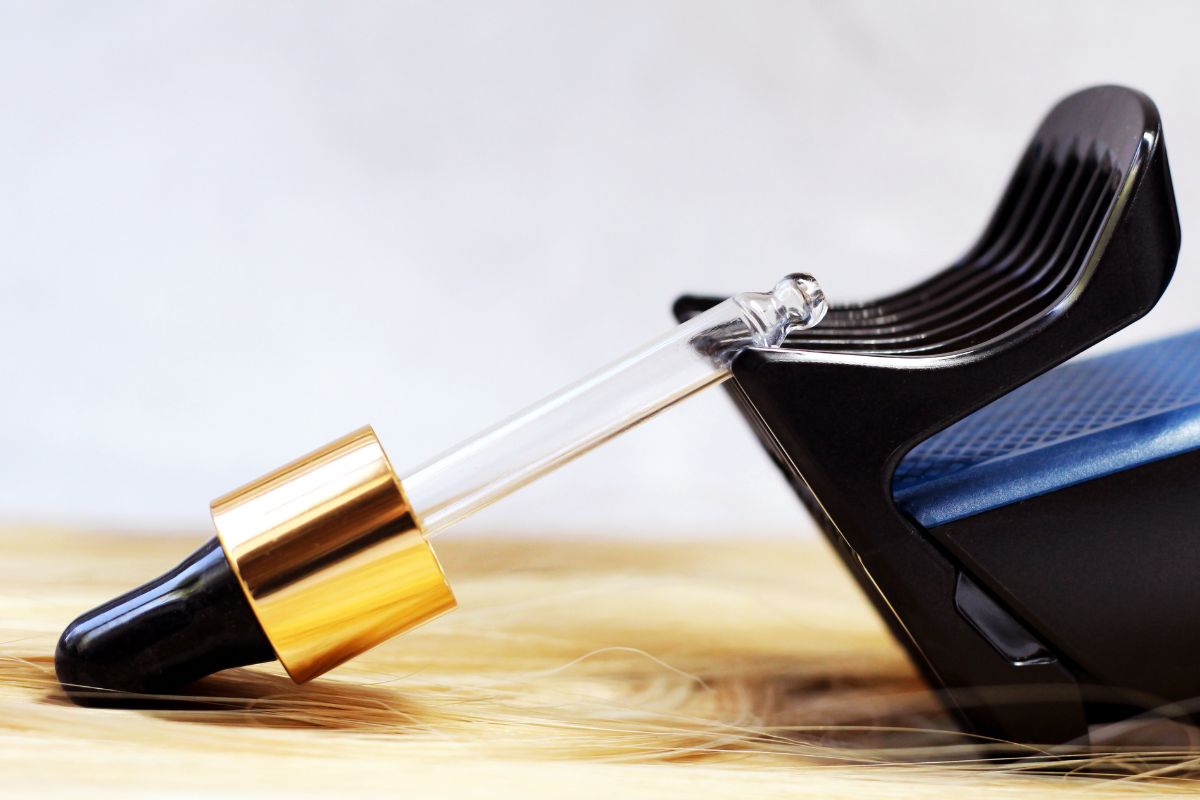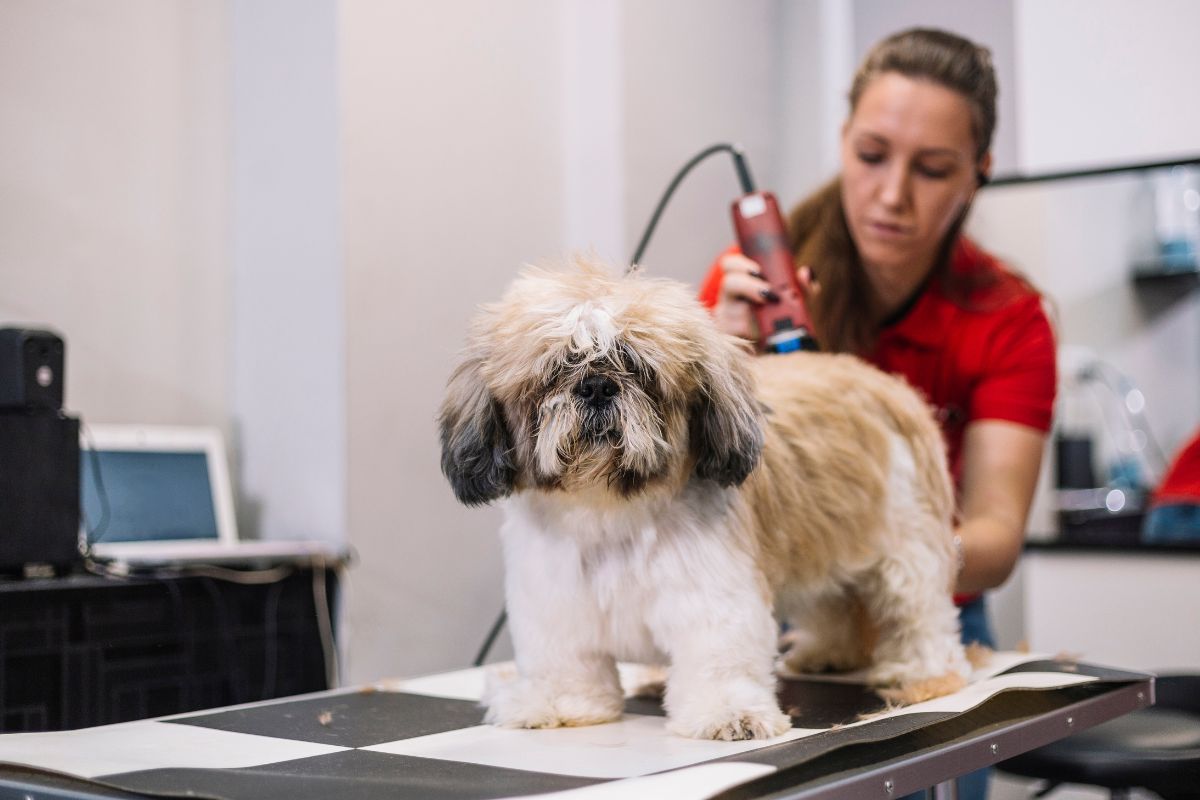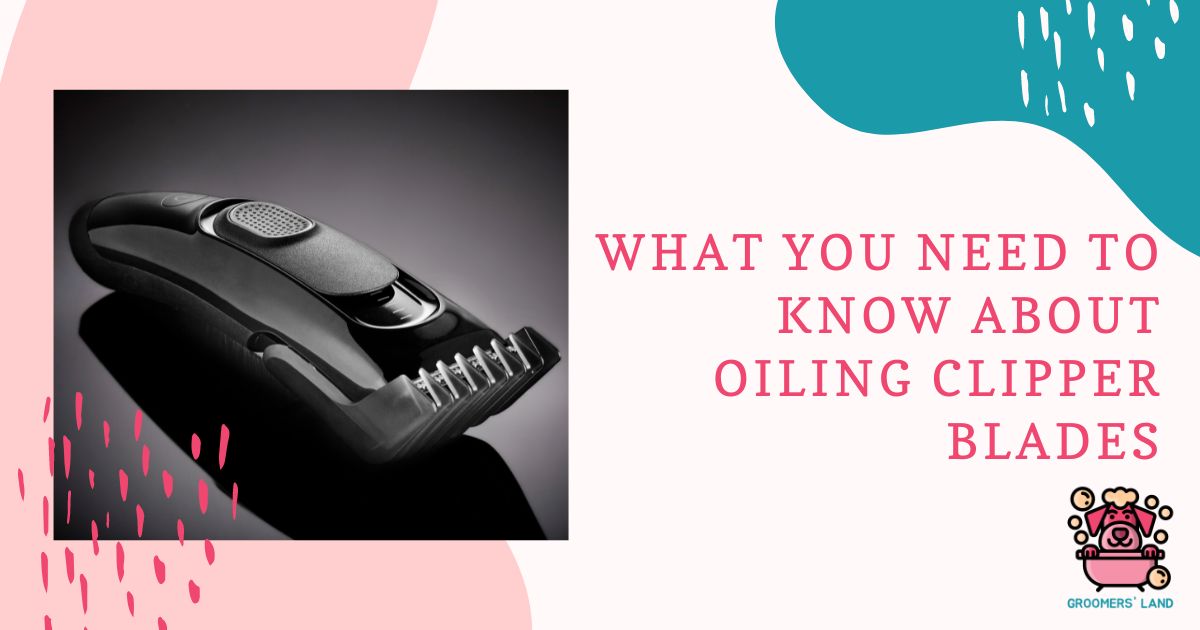Blade Oil for Clippers
There’s no doubt that oiling clipper blades are vital for the best performance and guaranteed long life of your trimmer or clipper machine.
Clipper oil reduces friction and keeps your clippers from snagging and pulling as you cut or trim your hair. This process doesn’t take too much blade oil; a single drop at the end and the foot of the clipper blade is all you need.

How to Oil Clippers
Oiling clippers is a relatively easy task. As aforementioned, it does not require a significant amount of oil to lubricate a clipper blade; yet, most groomers use too much oil. When you use too much blade oil for clippers, the oil will drain from the teeth and onto the coat. On the other hand, when you use little oil, it will remain in the teeth.
Blade oil is the best and most effective lubrication for your clippers or trimmers. It remains attached to the blade to ensure that friction, heat, and pet dander do not cause the cutting surfaces to get obstructed.
Do not use ordinary coolants, WD-40, and Rem Oil, since they all evaporate rapidly, causing increased friction and heat on your clipper blades. This eventually leads to premature degradation of the cutting edges.
While four areas on the blade require oiling, you only need to focus on three areas daily. If you do not properly clean your clipper blade in a blade wash, you must re-oil all four regions.
The process of oiling will at first appear challenging, but as you continue to do it, it will eventually feel second nature to you. Here is how to clean and oil clippers for best performance:
To begin, you will need to move the cutter to either side. Doing this aligns the notch in the blade with the spring. Move it to the side so you can see the back rail on both sides of the spring as you push it out. You will have access to oil in the first three places as a result.
Next, place a solitary teeny-tiny oil drop on each back rail. Place the first drop on the rear rail just outside the left spring and the second on the rear rail just outside the right spring in the space you have gained access to by sliding the cutter over.
Place the tiniest drops of oil in the notch at the bottom of the cutter. If you don’t lubricate this groove once a day, at the very least, your blade can make an annoying screaming sound and might not cut as well. If there isn’t any oil present, a dry blade guide will cause the cutter to pause. It could cause the blade to cornrow in addition to causing other serious issues.
Now, return your cutter to the middle of the blade by pushing it in. Either while the edge is still on the table or after mounting on the clipper. You can then apply the fourth drop to the teeth of the blade; lubricate them while they are still attached to the clipper. Switch on your clippers to rapidly distribute the oil throughout the cutting surfaces.
Be sure to lubricate your clipper teeth each time you replace the blade because the hair you are cutting will remove the oil from the teeth of the blade. If you use blade wash to remove the oil, the first three points will not require additional lubricant for the rest of the day.
Finally, place a single minuscule drop of oil in the exact middle of the blade’s cutting surface when the clipper is either on the table or, more preferable, on the clipper itself. Do not drag a bead of oil across the teeth; because it will go onto the coat when it seeps down through the gaps between the teeth.
When you turn the clipper on, it will distribute a small layer of oil across the blade. That should be all you require.
The difference shouldn’t be too great. After it has spread across the blade, it will remain in that location for a considerable time. This reduces heat, protects your cutting edges for months, and prevents pet hair from melting and forming an orange accumulation on your cutting surface.
Other benefits include a longer lifespan for your cutting blades. When you change the blade on your clipper, you need to add one tiny drop of oil to the space in the center of the teeth. Read our article and find out How to Use Dog Nail Clippers Safely and Properly!

Hair Clipper Oil Alternatives
One of the most commonly asked questions among groomers is, can I use vegetable oil on hair clippers? The answer is no! There are several other alternatives to lubricate hair clippers but vegetable oil.
Mineral oil and baby oil are two excellent substitutes for hair clipper oil. They have a low viscosity and are heat-resistant.
When choosing hair clippers oil substitute, it’s a good idea to make things straightforward. The most obvious solution would be selecting oils with a viscosity close to clipper oil.
Keep in mind these two aren’t your only choices. Herein, you’ll discover a list of more potential options for hair clippers oil. However, we strongly recommend these two as the greatest alternatives.
Oil Mineral
Because it has a low viscosity and can survive the high heat produced by the clipper blades, mineral oil works well on hair clippers.
Your regular clipper oil is essentially just refined mineral oil in any case. Because it is an inert and chemically stable oil, it is a significant component in blade oil. It is, therefore, present in many skin care products.
Mineral oil should be available from a pharmacy or even a retailer of animal feed.
Infant Oil
Baby oil, which is just mineral oil with perfumes added, performs admirably as a hair clipper oil. It has a low viscosity and is safe to apply to the scalp.
It’s a fairly acceptable alternative, but mineral oil may still be preferable.
This is because not all men will enjoy the perfumes, for whatever reason. One is that scents can occasionally cause allergies to flare up.
Having said that, baby oil will neither damage the clipper nor its blades.
Why You Should Lubricate Hair Clippers
By lubricating your hair clippers, you decrease the chances of friction that might dull the blade, avoid overheating, and keep your clippers sharper for a prolonged period. While oiling your clipper blades is not required after each usage, you should create a lubrication routine every two or three uses.
Well-lubricated hair clipper blades cut smoothly and last longer than unlubricated blades.
The Benefits of Oiling Clippers
You probably must have observed a lot of barbers regularly lubricating their clippers or trimmers. Have you ever questioned why they do it? Lubricating a clipper has several benefits, which include:
Smooth and Effective Operation
Like other machinery, clippers need oiling to operate more smoothly and effectively.
Longer Lifespans
Oiling your clipper increases its durability because it makes it easier to use. And the decrease in wear and tear is frequently to blame.
Prevents Rust
Oiling clippers is essential since most clipper blades are metallic and susceptible to rust. It prevents air and water molecules from building up on the blade surfaces; hence rusting will not occur.
Maintains Your Clipper’s Performance
When the clipper is properly lubricated, there is less friction and, consequently, less heating. This makes it cozy to use for extended periods.
Low Noise Pollution
When there is enough lubrication, the clipper’s blades typically glide smoothly and silently. That should be obvious.

Parting Words
Whether you use Wahl, Oster, Andis, or even Phillips clippers, it is essential to know about oiling clipper blades. As explained in this article, regular cleaning and oiling guarantee your clipper blades’ best performance and long life.
Remember to wear protective gear when oiling your clippers to avoid health problems. Always check at the back of the can for a list of the protective clothing and equipment you need to wear to spray these aerosols safely. The majority of them include denatured alcohol, which, when inhaled, can be lethal. Oil is not harmful.
Above all, clean your clipper blades frequently to kill germs and bacteria, eliminate hair residue and unpleasant odors, and protect them from mildew, molds, and rust.

